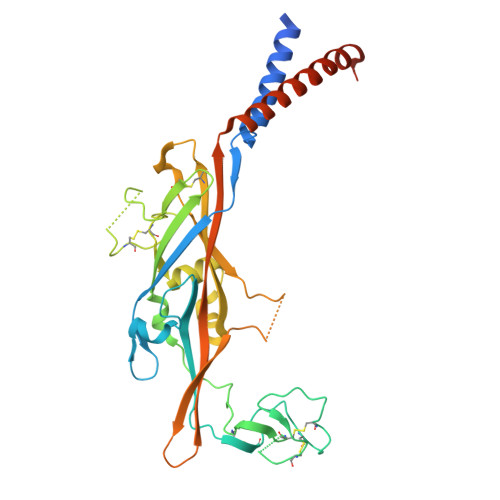Mechanistic insights into the selective targeting of P2X3 receptor by camlipixant antagonist.
Thach, T., Dhanabalan, K., Nandekar, P.P., Stauffer, S., Heisler, I., Alvarado, S., Snyder, J., Subramanian, R.(2025) J Biological Chem 301: 108109-108109
- PubMed: 39706278
- DOI: https://doi.org/10.1016/j.jbc.2024.108109
- Primary Citation of Related Structures:
9BPC, 9BPD - PubMed Abstract:
ATP-activated P2X3 receptors play a pivotal role in chronic cough, affecting more than 10% of the population. Despite the challenges posed by the highly conserved structure of P2X receptors, efforts to develop selective drugs targeting P2X3 have led to the development of camlipixant, a potent, selective P2X3 antagonist. However, the mechanisms of receptor desensitization, ion permeation, and structural basis of camlipixant binding to P2X3 remain unclear. Here, we report a cryo-EM structure of camlipixant-bound P2X3, revealing a previously undiscovered selective drug-binding site in the receptor. Our findings also demonstrate that conformational changes in the upper body domain, including the turret and camlipixant-binding pocket, play a critical role: turret opening facilitates P2X3 channel closure to a radius of 0.7 Å, hindering cation transfer, whereas turret closure leads to channel opening. Structural and functional studies combined with molecular dynamics simulations provide a comprehensive understanding of camlipixant's selective inhibition of P2X3, offering a foundation for future drug development targeting this receptor.
- Department of Biological Sciences, Purdue University, West Lafayette, Indiana, USA. Electronic address: ttthach@purdue.edu.
Organizational Affiliation:



















